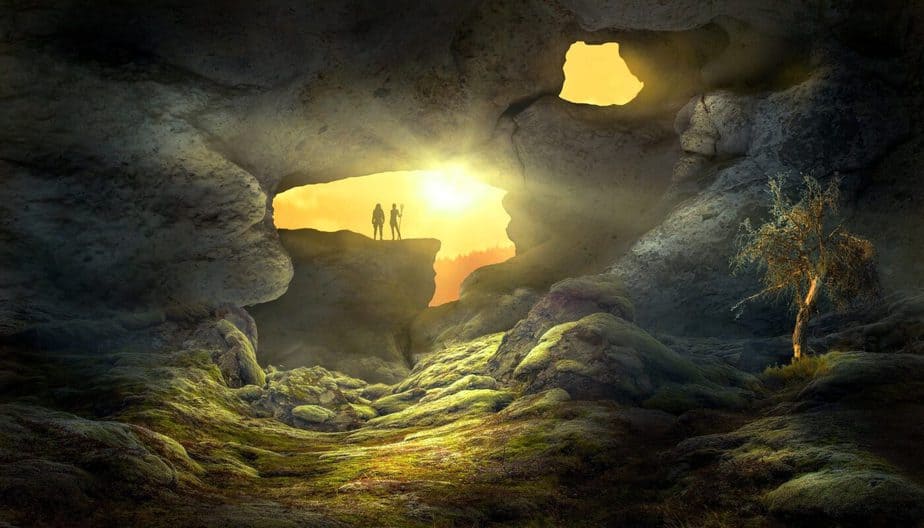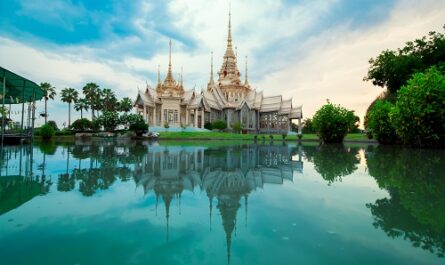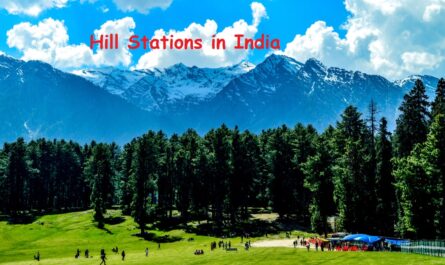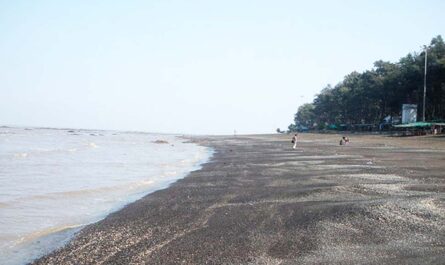Caves enthralled us as children, and they continue to enthral many people now. There are several amazing caverns in India, many of which house magnificent works of art and sculpture. What lies beneath the dismal, unknown caves’ surface? What secrets do they hold, and what lies on the other side of the door? Ajanta and Ellora are the first caves that come to mind when we think about India. The caves, hidden among the woods, provided not only refuge but also ideal circumstances for monastic life.
Andhra Pradesh
- Akkanna Madanna Caves, Vijayawada
- Belum Caves, Kurnool district
- Bhairavakona Caves, Hindu temple caves located at Ambavaram Kothapalli, CS Pur Mandal, Prakasam district
- Bodhikonda and Ghanikonda Caves, Ramatheertham, Vizianagaram district
- Bojjannakonda and Lingalakonda, Anakapalle, Visakhapatnam district
- Borra Caves, Aruku Valley, Visakhapatnam district
- Guntupalle Caves (near Dwaraka Tirumala), West Godavari district, popularly known as “Andhra Ajanta”, believed to pre-date even the Ajanta and Ellora caves of Maharashtra
- Moghalrajpuram caves
- Undavalli caves, Guntur district
Assam
- Longthaini Noh, Maibong, Dima Hasao
- Dudhnath, jogighopa, South Salmara
Bihar
- Son Bhandar Caves
- Barabar Caves
- Lomas Rishi Caves
Goa
- Harvalem Caves, Sanquelim, Goa 403505, circa. 6th century.
Gujarat
- Dhank Caves
- Junagadh Buddhist Cave Groups, Junagadh district
- Bava Pyara Caves
- Kadia Dungar Caves
- Khambhalida Caves
Sana Caves
- Siyot Caves, Lakhpat Taluka, Kutch district
- Talaja Caves, Bhavnagar district
Haryana
- Dhosi Hill cave temple in Aravalli Mountain Range, Narnaul, Mahendragarh district
- Nar Narayan Cave Temple in Sivalik Hills range, Yamuna Nagar district
- Tosham Hill cave temple in Aravalli Mountain Range, Hisar-Tosham road, Bhiwani district
Himachal Pradesh
- Masroor Rock Cut Temple
Karnataka
- Aihole
- Badami cave temples
- Gavi Gangadhareshwara Temple
- Hulimavu Shiva cave temple
- Narasimha Jharni
- Nellitheertha Cave Temple
- Elora kailash temple
Kerala
- Airurpara
- Ambukuthi mala
- Bharatanpara
- Edakkal Caves
- Irunilamcode
- Kallil Temple
- Kaviyoor
- Kottukal
- Trikkur Mahadeva Temple
- Nedumala caves, Piralimattam
- Thovarimala Ezhuthupara
- Tuvarankad
- Vizhinjam
Madhya Pradesh
- Bagh Caves
- Bhimbetka rock shelters
- Udaygiri Caves
Maharashtra
- Ajanta Caves – Buddhist
- Aurangabad Caves – Buddhist
- Bedse Caves – Buddhist
- Bhaja Caves – Buddhist
- Dharashiv Caves – Jain, Buddhist
- Dhokeshwar Mahadeva Cave Temple, Ahmednagar – Hindu
- Elephanta Caves – Buddhist, Hindu, Brahmanical
- Ellora Caves – Hindu, Buddhist, Jain
- Jogeshwari Caves – Buddhist
- Kanheri Caves – Buddhist
- Karla Caves – Buddhist
- Kharosa Caves – Buddhist, Hindu, Jain
- Kondana Caves – Buddhist
- Kondivita Caves – Buddhist
- Lenyadri – Buddhist
- Mahakali Caves – Buddhist
- Mandapeshwar Caves – Buddhist, Hindu
- Pandavleni Caves – Buddhist
- Pataleshwar, Pune – Hindu
- Pitalkhora Caves – Buddhist
- Bahrot Caves – Zoroastrian
- Manmodi Caves – Buddhist, Jain
- Rudreshwar caves In village of Dakla taluka Sillod District Aurangabad
- Ajanta Caves
- Amarnath Cave Temple
- Badami Cave Temples
- Bagh Caves
- Barabar Caves
- Belum Caves
- Borra Caves
- Caves of Meghalaya
- Edakkal Caves
- Elephanta Caves
- Ellora Caves
- Erravaram Caves
- Guntupalli Caves
- Jogeshwari Caves
- Kailash Caves
- Kanheri Caves
- Karla Caves
- Kotumsar Cave
- Krem Liat Prah
- Krem Synrang Pamiang
- Lakhudiyar Caves
- Lenyadri
- Mahakali Caves
- Mandapeshwar Caves
- Moghalrajpuram caves
- Pandavleni Caves
- Patal Bhuvaneshwar
- Robber’s Cave
- Rock Shelters of Bhimbetka
- Siju Cave
- Umachal rock cave
- Undavalli caves
- Varaha Cave Temple
About Few Must Visit Caves in India
Ajanta and Ellora Caves, Aurangabad
The Ajanta and Ellora Caverns, located in Maharashtra’s Jalgaon city, are unquestionably among the most famous caves in the country. They are UNESCO World Heritage Sites and the pinnacle of Indian rock-cut architecture. People of various religions, including Hindus, Buddhists, and Jain, have sought refuge in these caverns. Ajanta is a collection of 29 caverns dating from the second to sixth centuries AD, whereas Ellora is a collection of 34 caves ranging from the sixth to eleventh centuries AD. Ellora’s caverns are a mix of Hindu, Buddhist, and Jain, whereas Ajanta’s are largely Buddhist. The paintings and sculptures in these caverns are a testament to the architectural brilliance of the time period.
The Ajanta Ellora caves in northern Maharashtra are without a doubt the most beautiful rock-cut caves in India. Ellora has 34 caverns dating from the 6th to 11th centuries AD, while Ajanta has 29 caves ranging from the 2nd to 6th centuries AD. Ajanta’s caverns are all Buddhist, but Ellora’s caves are a mix of Buddhist, Hindu, and Jain. In 1983, the caves were designated as a UNESCO World Heritage Site. It’s incredible to consider how much time and effort must have gone into hand-carving them! This travel guide will help you plan your trip to the caverns.
Elephanta Caves, Mumbai
Elephanta Caves, one of India’s most famous caves, is only 10 kilometres from Mumbai. These caves, which are a UNESCO World Heritage Site, are located on Elephanta Island, which has its own fascinating historical past. The main cave, which is located on Gun Hill, houses amazing sculptures of Lord Shiva in various positions and forms. The panels also portray the five stages of an ascetic’s life, with Lord Shiva occupying the last stage. The main cave, which is also known as the east and west wings of the main cave, is also the most complicated of the three caverns. These wings were most likely used as ascetics’ quarters.
The seven ancient rock-cut caverns on Elephanta Island, just off the coast of Mumbai, are the next best thing if you can’t make it to Ajanta or Ellora caves. In 1987, the caves were designated as a UNESCO World Heritage Site. They are, unsurprisingly, one of Mumbai’s most popular tourist attractions. Hand-carved caves, similar to Ajanta and Ellora caves, although on a smaller size, have been sculpted out of rock. They are thought to have been created in the mid-fifth and early-sixth century. The main cave features exquisite sculptured panels depicting Lord Shiva, the Hindu god of creation and destruction. Take a ferry from Colaba’s Gateway of India to get there. Caves are closed on Mondays, and boats are not available during the monsoon season.
Badami Caves, Karnataka
The Chalukyas were great enthusiasts of architecture, as seen by the Badami Caves. The religious significance of these caverns is immense. These caverns, which are located at the mouth of a ravine, date from the 6th and 7th centuries AD. There are four caves in total, three of which are Brahminical temples and one of which is a Jain temple. Images of Hindu gods, Mahavira, and other Jain Tirthankaras adorn the caves, which are ornamented with magnificent sculptures. Carvings of an 18-armed dancing Shiva, a two-handed Ganesh, and other figures may be seen in Cave 1. Vaishnavite and Shaivite caves 2 and 3 respectively.
Badami’s cave temples, in northern Karnataka, are a popular Hampi side excursion. The four important ones come from the Chalukya Empire’s rule in the 6th century. They’re open from sunrise to sunset every day. Lord Shiva is honoured in one cave, Lord Vishnu in two, and Lord Jain is honoured in the third cave. They have a great view of the Agastyatirtha Tank and the waterside Bhutanatha Temples, which enhances to the atmosphere. It’s a picture-perfect scene! Not far from the major caverns, another cave with 27 Hindu carvings was discovered in 2015. You might come upon more Chalukya Empire ruins if you wander around the town and its roads.
Tabo, Himachal Pradesh
On the Spiti Valley, the Tabo Caves are located just across from Tabo hamlet. These caves, carved out of the hills, were used by Buddhist monks for meditation as well as functioning as a winter retreat. The larger caves served as assembly rooms, while the smaller caves served as living quarters. Several prayer flags will be seen when visiting these caverns, indicating that meditation is still performed within these caves. Inside, the mood is serene and quiet, as one would anticipate in such a setting.
Dungeshwari Cave Temples, Bihar
Dungeshwari Cave Temples is one of India’s most famous cave temples, located around 12 kilometres from Bodhgaya. For Buddhists, it has special religious significance because it was here where Gautama Buddha meditated. He also grasped the importance of the middle path on the route to enlightenment here. This historic event is commemorated by two shrines. A golden statue of the Buddha’s emaciated body portraying his penance may be found in one of the cave temples, while a gigantic statue of the Buddha can be found in the other.
The cave also houses a statue of the Hindu goddess Dungeshwari. However, they are known as Mahakal caves in the area. Apart from Buddhists, for whom these caverns are one of India’s holiest locations, the isolation and peace that they afford attracts ordinary people as well.
Undavalli Caves, Andhra Pradesh
Undavalli Caves are one of India’s must-see caves, located on the banks of the Krishna River about 8 kilometres from Vijaywada in Andhra Pradesh. They are a remarkable example of exceptional rock-cut architecture. The Vishnukundin rulers are honoured in these caves fashioned out of solid sandstone. An large statue of Lord Vishnu in a reclining pose may be found in one of the caverns here. It’s one of those images that will take your breath away. Other shrines devoted to Trimurti in the cave include Brahma, Vishnu, and Mahesh. The first floor, on the other hand, is filled with images of Lord Buddha and Buddhism in general. The beautiful craftsmanship on exhibit at these caves will leave you speechless as a visitor.
Khandagiri Caves, Odisha
The Khandagiri Caves are a short distance from Bhubaneshwar. They are a set of 15 caverns that are thought to have been used during King Kharavela’s reign and are one of the oldest instances of Jain rock-cut buildings. The Ananta Cave, Khandagiri’s most important cave, depicts women, athletes, and elephants.
Borra Caves, Andhra Pradesh
Borra Caves are around 90 kilometres north of Vishakapatnam, in the state of Andhra Pradesh. It’s a true natural wonder that dates back about 150 million years. William King, a British geologist, found it in 1807. Because the Borra Caves include a naturally formed Shiva Lingam, the tribal people who live in the villages surrounding the caves hold it in great regard. Inside the caves, strange natural structures such as mother-child, human brain, crocodile, and Shiv-Parvati may be found. The Shivalingam and the statue of Kamadhenu, a cow, are particularly appealing.
Karla Caves, Maharashtra
Karla Caves are one of the nicest caves to see in India, and are adjacent to Lonavala, which is a popular tourist destination. It dates back to 200 BC and is one of the earliest instances of early Buddhist temple art in India. The caves’ resemblance to wooden construction, despite the fact that they are rock-cut architecture, is an intriguing feature. The chaityagriha, India’s largest of its kind, is one of the most notable features of the Karla Caves. The arched entrances, vaulted interiors, Ashokan Pillar in front, as well as a stone facade and torana, all captivate visitors to the caverns.
Mawsmai Caves, Meghalaya
Mawsmai Caverns are one of Northeast India’s most magnificent caves. These caverns are frequently visited by tourists visiting Meghalaya. The caves are made up of natural limestone formations that have evolved throughout time. It’s worth noting that the caverns are well illuminated and include a large number of corridors and chambers. The stalactite and stalagmite formations are really attractive. Some caverns have enormous apertures, while others are so narrow that passing through them requires crawling.
Pataleshwar Caves, Maharashtra
Pataleshwar Caves, which originate from the eighth century AD, are strikingly comparable to Ellora. They include Lord Shiva’s shrine and are dedicated to him. It’s amazing to think that the entire cave was cut out of a single piece of rock, demonstrating remarkable architectural skill. Inside the temple, there are sculptures of Sita, Ram, and Laxman, as well as other Hindu gods and goddesses.
Bhimbetka Rock Shelters, Madhya Pradesh
The remarkable Bhimbetka Rock Shelters, one of India’s Little-Known UNESCO World Heritage Sites, were found by chance in 1957. More than 700 rock shelters can be found in the deep forest near the foothills of the Vindhya mountains, roughly an hour from Bhopal in Madhya Pradesh. The fact that they date back to the Paleolithic era and that many of them have tribal rock drawings on them is quite extraordinary.
Mawsmai Lighted Cave, Cherrapunji, Meghalaya
The caves of Meghalaya, in northeast India, are well-known. Over 1,000 of them have been investigated! Mawsmai Cave, in Cherrapunji, is the most accessible (two hours from Shillong). It is kept in good repair as a tourist attraction and is illuminated throughout. The other caves are more difficult to explore and need caving expeditions with the proper equipment. Siju, Mawmluh, Mawsynram, and Liat Prah are among them (the longest cave in India). In Meghalaya, the world’s longest sandstone cave, Krem Puri, was recently discovered and surveyed. A list of caves in Meghalaya is available from Meghalaya Tourism. From Shillong, the Meghalaya Adventurers organise week-long caving trips. Thrillophilia provides a number of caving excursion options. Kipepeo also organises caving trips that can be customised.
Kailash and Kotumsar Caves, Chhattisgarh
The Kailash and Kotumsar caverns in Chhattisgarh’s Bastar area are also among the world’s longest. Within Kanger Vally National Park, about an hour from Jagdalpur, these limestone caves continue deep down. The biggest of the two caves is Kotumsar Cave. Because the caves are tiny, slippery, and dark inside, the Forest Department regulates access. It is required that you travel with a tribal guide from the area. Only go if you’re feeling brave and don’t have claustrophobia! The caves are closed from June to the end of October during the monsoon season, when they fill with water.
Belum Caves, Andhra Pradesh
The magnificent Belum Caves, which run for 3,229 metres (10,594 feet), are India’s largest and longest caves exposed to the public. They’re part of a larger 1,000-year-old cave network that was produced by underground water movement, resulting in stunning stalactite and stalagmite sculptures. The caves are thought to have been inhabited by Jain and Buddhist monks many centuries ago, and there is even a cavernous meditation place inside. The caverns are located in Andhra Pradesh, roughly midway between Bangalore, Karnataka, and Hyderabad, Telangana. Each city is around a six-hour drive away. Combine them with a trip to Gandikota, India’s “Grand Canyon.”
Borra Caves, Andhra Pradesh
Although not as long as the Belum Caves, the Borra Caves have similar architecture and are more famous due to its accessibility. The Ananthagiri Hills in the Araku Valley near Vizag are home to several caves. Vizag’s Kirandul Passenger Train runs directly to the caves in the early morning. The trip takes about three hours and is very lovely. Alternatively, you can rent a car for the day and go sightseeing in the neighbourhood.
Undavalli and Mogalarajapuram, Andhra Pradesh
Andhra Pradesh also features a number of well-preserved ancient rock-cut cave temples from the 4th and 5th century. The palm palms and rice paddies that surround them give a peaceful contrast to the metropolis of Vijayawada, which they are close to. Shrines dedicated to the Hindu trinity of Shiva, Vishnu, and Brahma can be found inside. The colossal reclining figure of Lord Vishnu on the third floor, however, is the highlight. On the east side of Vijayawada, the Mogalarajapuram (try saying that!) caves have been severely destroyed. Nonetheless, they’re fascinating. Vijayawada is around an hour and a half from Amaravathi, Andhra Pradesh’s future planned capital city.
Udayagiri and Khandagiri, Odisha
One of the most popular tourist attractions in Bhubaneshwar, Odisha’s capital, is the rock caverns atop the twin Udayagiri and Khandagiri hills. They were sculpted for Jain monks to occupy during Emperor Kharavela’s reign in the 1st and 2nd centuries BC. He penned a 17-line inscription in cave number 14 (Hathi Gumpha, the elephant cave). Atop Khandagiri, in addition to the caves, there is a Jain temple. Climbing the hill will reward you with a beautiful view of the city. Every Saturday morning at 6.30 a.m., Ekamra Walks offers free guided walking tours of the Khandagiri hills.
Tabo, Spiti, Himachal Pradesh
Tabo, one of India’s greatest Buddhist monasteries, is a great place to visit if you’re looking for remote meditation caves. The rough and rocky slope above the town, which is located in the Spiti Valley in high altitude Himachal Pradesh, is replete with caves where local Buddhist lamas meditate. Hundreds of caverns, huge and tiny, have been hand-dug into the mountain. You can approach them and spend some time in silent reflection with them.
Mahavatar Babaji Cave, Dunagiri, Uttarakhand
Have you read Paramahansa Yogananda’s Autobiography of a Yogi? You can meditate in the cave where Mahavatar Babaji taught Kriya Yoga to his pupil Lahiri Mahasaya in 1861. Babaji, who is said to have kept his physical look for hundreds of years, is still alive and well in the area. The cave is managed by the Yogoda Satsanga Society, which was founded by Paramahansa Yogananda and has an ashram in the area. It is open every day from 11 a.m. until 2 p.m. Dunagiri Retreat also provides a lovely view of the cave and is a tranquil place to stay. Hiking through the forest is the only way to get to the cave.
Shri Amarnath Trek
There are a few of famous cave temples dedicated to Lord Shiva in Jammu and Kashmir that are renowned pilgrimage destinations. The Shiv linga (a symbol that depicts Lord Shiva in Hinduism) is a stalagmite constructed of ice in the Amarnath temple, one of Hinduism’s holiest sites. It is located high on Mount Amarnath and can only be reached during certain times of the year by a multi-day hike. During the annual Amarnath Yatra in July and August, hundreds of thousands of pilgrims come.
Shiv Khori, near Ransoo in the Shivalik Hills northwest of Jammu, is much easier to visit, though a short journey is still required. Devotees can trek around 150 metres into the cave to see a natural Shiva linga stalagmite. In February or March, the cave hosts a three-day market as part of the Maha Shivaratri festival.
Rock Fort Temple and Pallava Caves, Tiruchirappalli, Tamil Nadu
Trichy’s Rock Fort temple complex is the city’s main point and one of the best venues to see south Indian temples, including Madurai’s Meenakshi Temples. It was built on an outcrop 83 metres (237 feet) above the city by the Madurai Nayaks. The Ganesh-dedicated Uchi Pillaiyar Temple sits atop it, and the panoramic view of the town is breathtaking. In the 6th century, however, the Pallavas carved miniature cave temples closer to the hill’s base on the south side. Upper Cave Temple and Lower Cave Temple are their names. Unfortunately, grilled gates normally prevent access to the higher one. The Lower Cave Temple features more intriguing sculptures and is more spectacular, albeit it might be difficult to locate.
Naida Caves, Diu
Dui Island, off the main path near Gujarat, is home to an enchanting maze of light-flecked caves. They’re close outside Dui Fort, which was erected by the Portuguese during their 16th-century occupation of the island. The caves are assumed to have been excavated by the Portuguese in order to obtain stone for the fort. For the finest dappled effect, go during the middle of the day when the sun is straight overhead.
Barabar Hill Caves, Bihar
The Barabar Hill Caves are unique in that they appear to be India’s earliest surviving rock-cut caves. They generally date from the 3rd century BC, when the Mauryan Dynasty and Emperor Ashoka reigned. Four caverns in a large long granite boulder on Barabar Hill, as well as three caves on nearby Nagarjuni Hill, contain rare Hindu and Buddhist literature. E.M. Forster included the caverns as a central setting in his book A Passage To India because of the strange echo they produce from their polished walls. They are accessible by day journey from Bodhgaya.
Dungeshwari Cave Temples, Bihar
The Dungeshwari cave temples (also known as the Mahakala caves) are around 45 minutes from Bodhgaya in Bihar and are worth visiting if you’re on the Buddhist route. The Buddha stayed there for several years before moving on to Bodhgaya and finally achieving nirvana. Most likely, you’ll be asked in to meditate. It’s a lovely area to relax and contemplate the peace and spirituality. One of the caverns has a big golden Buddha statue that is a showpiece.
Karla Caves, Lonavala, Maharashtra
The largest and finest preserved prayer hall in India is reported to be found in these rock-cut Buddhist caves. It is thought to date from the first century BC. In the complex, there are 15 more caves that were used as smaller monastery living and prayer facilities. The caves were hand-carved into a mountainside above the hamlet of Karla, Maharashtra, roughly two hours from Mumbai. To the south, in Bhaja, there is another group of caverns. Overall, their architecture is more remarkable, while Karla’s one cave is the most impressive. This Karla Caves travel guide can help you plan your vacation.
Kanheri Caves, Mumbai, Maharashtra
The Buddhist caves of Kanheri, located in the Sanjay Gandhi National Park on the outskirts of Mumbai, are a renowned tourist attraction. From the 1st century BC to the 10th century AD, more than 100 of them were hand-carved out of volcanic rock in varying sizes. Kanheri was a major Buddhist town and educational centre in western India at the period, and the cave complex is the largest of its sort in India, with the most caves on a single hill. The summit offers a spectacular perspective of the city.
Varaha Cave, Mahabalipuram, Tamil Nadu
A magnificent rock-cut Hindu cave temple dedicated to Lord Vishnu can be seen in the UNESCO World Heritage Site of Mahabalipuram, near Chennai in South India. It was built during the Pallava Dynasty’s reign in the late seventh century. It has a panel with a carving of Lord Vishnu as Varaha, the boar who lifts Earth Goddess Bhudevi from the ocean in his third incarnation. On other walls, there are more Hindu mythological scenes engraved.
Rawla Narlai Village caves., Rajasthan
The village of Narlai, located midway between Jodhpur and Udaipur, is a perfect place to take a break from travelling and explore some hidden caves away from the throng. A cave shrine dedicated to Lord Shiva, built where renowned Indian sage Narada is reputed to have meditated, is the main point. It’s carved into a massive granite hill that towers over the countryside and can only be reached by hiking up a rock cleft. Other caverns may be found on the hill, as well as a marble elephant monument. Stay at Rawla Narlai in the 17th century for a luxurious heritage experience.
Mahakal Cave, Jayanti, West Bengal
A three-hour jungle journey from remote Jayanti hamlet in Buxa Tiger Reserve, alongside the Jayanti River, will take you to Mahakal Cave in the highlands near the Bhutan border. The natural cave is dedicated to Lord Shiva and displays stalactite formations. It’s not simple to get there, though, because much of the journey is uphill and down a rough path. Along the way, there’s a smaller Mahakal cave that most people don’t explore. The Dooars plains in northeastern West Bengal are home to the Buxa Tiger Reserve. It is not recommended to visit during the rainy season (mid-June to October), as the cave is inaccessible.




